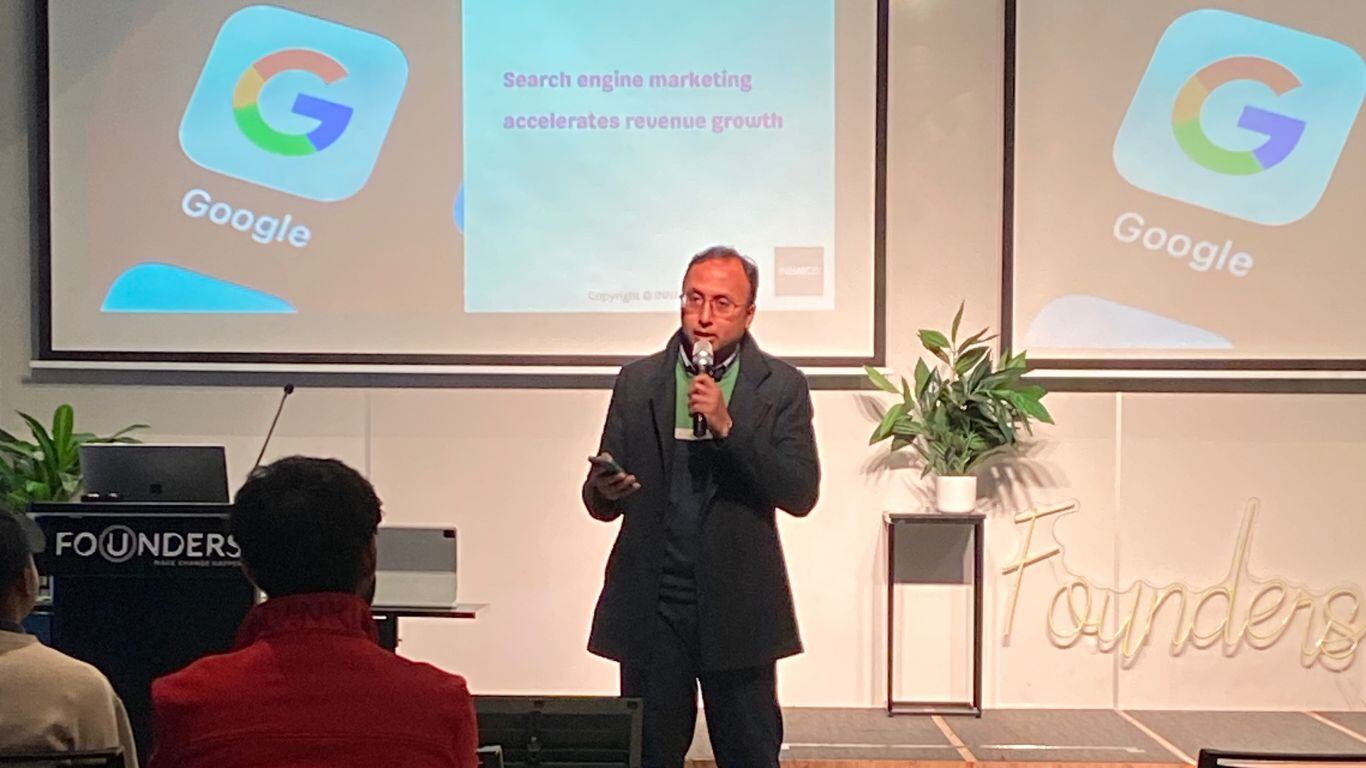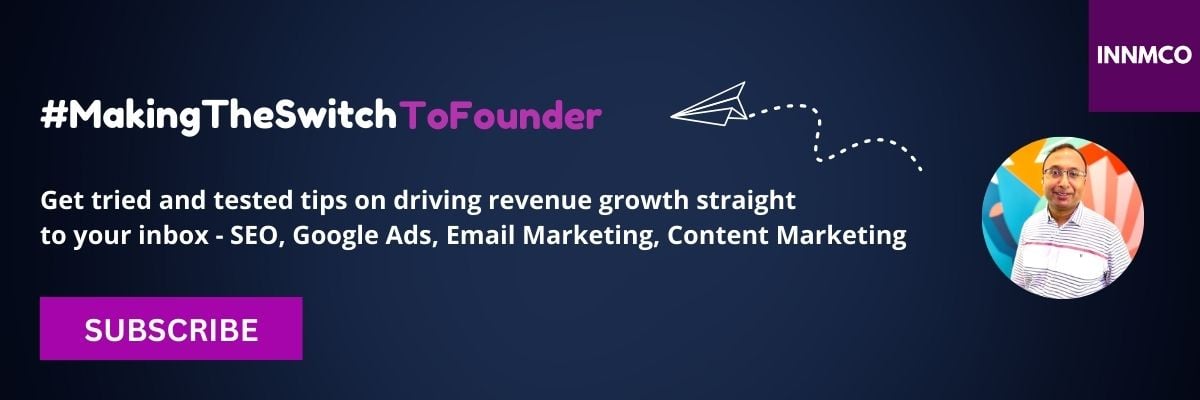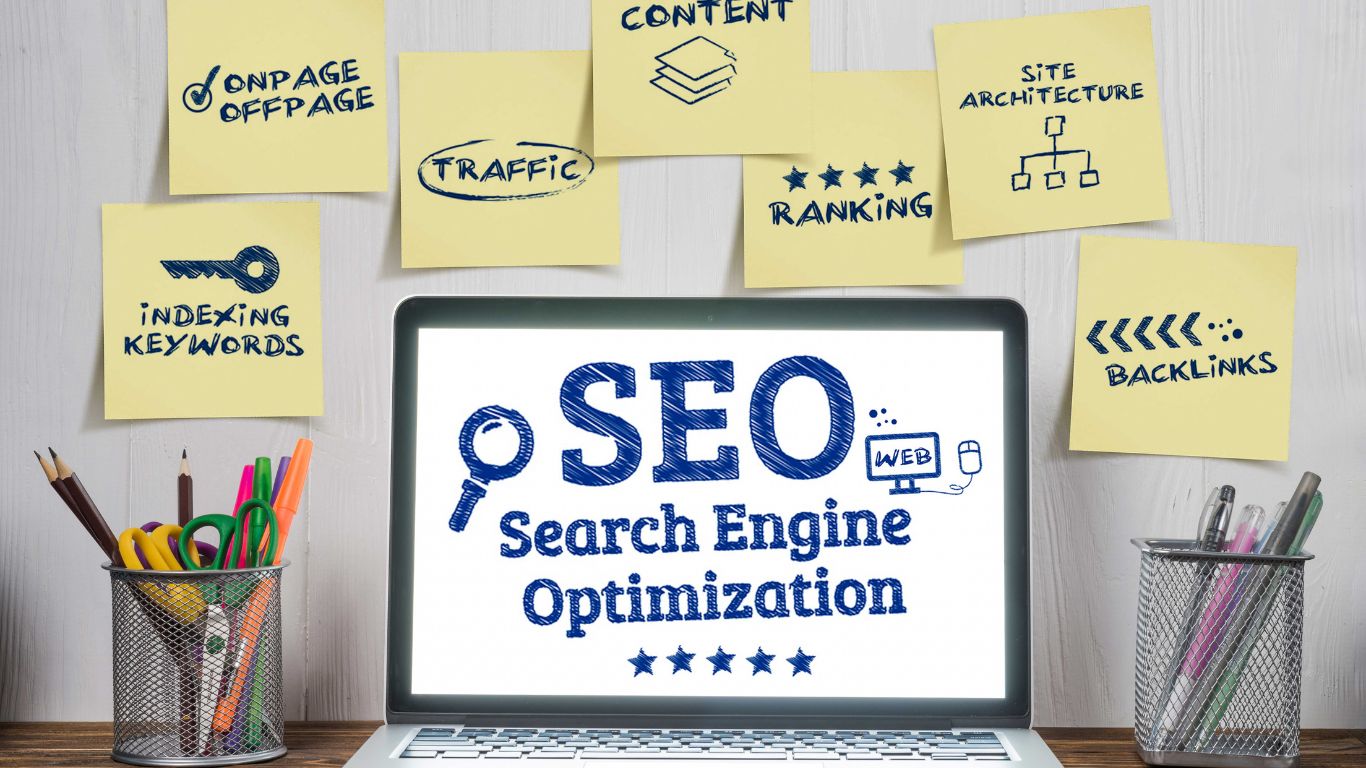Updated on: September 03, 2025
Search Engine Marketing Strategies for your Business
There are approximately 8.5 billion searches per day in Google.
What is Search Engine Marketing?
Search engine marketing is a form of digital marketing that enables website owners to increase their website visibility in google search using search engine optimisation and google ads.
Search engine marketing’s purpose is to
1. Increase brand awareness
2. Drive traffic to your website
3. Increase conversions
“Search engine marketing accelerates revenue growth.”
My Story
Before starting INNMCO (pronounced IN - EM - COH). I was a digital marketing strategist at NTT DATA for 10+ years.
When I started INNMCO in 2021, I was trying to inform prospective buyers about my services using an outbound marketing approach. I cold messaged a lot of people in my network. I quickly discovered that, I was talking to people who I thought needed my service but didn’t really need what I was selling.
I realised that I didn’t know all the people who needed my services. I was thinking, what if all the people who needed my services came to me instead. This is what is called inbound marketing. This means you need to be creating valuable content and experiences for buyers to help them at every stage of the buyer’s journey. The information that you provide needs to be in a format (e.g. blog, video etc..) that resonates with your buyer.
I used SEO and Google Ads as channels for distributing my content. I prototyped, tested and optimised my digital marketing campaigns over time. I used the learnings from my digital marketing campaigns to craft effective Search Engine Marketing (SEO and Google Ads) strategies for my business.
Here are a few SEO and Google Ads strategies to improve your content visibility in search and generate leads for your business:
SEO Strategies
1. Use the topic cluster model while creating content
Implement the topic cluster model to showcase your specialisation to your prospective buyers. When prospective buyers see useful content on our website, they reward you with clicks and conversions. A topic cluster model includes a pillar page and multiple cluster pages. A pillar page provides a broad view on a particular topic. Cluster pages cover associated topics.
As an example, one of our pillar page is ‘What is SEO?’. Our cluster pages for our pillar page includes associated topics such as - how to implement SEO?, what is SEO content writing?, what is the difference between SEO and paid search?
2. Create quality content that matches search intent
There are 4 main types of search intent. Your website needs to be found by buyers who have different types of search intent. While optimising your web pages, consider using keywords for the 4 types of search intent.
-
Navigational search intent. If a buyer is looking to navigate to a particular page. They have a navigational search intent.
-
Informational search intent - If the buyer is looking to learn more about a topic. They have an informational search intent.
-
Commercial search intent - If the buyer is looking to compare two services providers or solutions. They have a commercial search intent.
-
Transactional search intent - If the buyer is looking to schedule an appointment or a demo. They have a transactional search intent.
The advent of generative AI has changed the search engine marketing landscape. Read this blog to learn more about, how is SEO changing, what does this mean for you as a marketer and my take on what strategies you need to be relevant.
3. Create quality content with the buyer in mind.
Google uses the EEAT framework to assess the quality of content on your website. EEAT stands for Experience, Expertise, Authoritativeness and Trustworthiness.
-
Experience - Google looks at content that demonstrates the creator's first hand experience on the subject matter. Write about topics where you have first hand experience in solving a particular problem.
-
Expertise - Expertise often overlaps with experience but they are not the same thing. Google looks at, whether the authors have the knowledge, qualifications and credentials to give reliable information. As an example provide a link to your BIO which showcases your credentials on the topics that you specialise in.
-
Authoritativeness - Google reviews the authoritativeness of the creator, the content and the website. Building authority on a topic that you specialise in, takes time. When your industry peers start referring to your articles or blog posts, you have started to establish authority in the areas that you specialise in.
-
Trustworthiness - Cite trustworthy sources while writing your articles. Evaluate and update your content on a regular basis to ensure it’s accurate, relevant and informative.
Content needs to be written in a way that is useful for your target audience. It needs to include relevant keywords, address user intent and has good readability. Read this blog for more information on writing useful content while optimising for search engines.
Google Ads Strategies
Google ads uses an advertising model called the pay per click model, where the advertisers pay for every click. If you are curious about the differences between SEO and Google Ads, read this blog to find out the differences, pros and cons of SEO vs Google Ads. Here are a few Google Ads strategies to generate leads for your business.
1. Embrace the sales lifecycle while creating Google Ads for your business.
Broadly speaking there are 3 parts to a sales funnel - top of the funnel (TOFU), middle of the funnel (MOFU) and bottom of the funnel (BOFU).
- TOFU - The buyers are problem focused. They may have heard about your business but they don’t care about business as yet. Use generic keywords that are more problem focused to trigger your google search ads.
- MOFU - The buyers recognise that their problem needs a solution. They have heard your business and they are slightly interested in what you have to say. Use keywords related to your product, service or industry.
- BOFU - The buyers have acknowledged their problem, they have researched a solution and they are ready to purchase. Use branded and competitor keywords to trigger your google search ads.
2. Optimise your landing page to increase conversions
Optimising your landing page increases conversions. Conversions are one among the many important KPI’s for evaluating the success of your google ads search campaign. Optimise your landing page by improving the:
- content of your landing page
- layout of the landing page
- placement of call to action i.e. what you want your buyers to do next after reading your content.
Conclusion
I used inbound marketing to generate leads for my business. Create quality content that matches your buyer’s search intent. Use the topic cluster model while creating content.
Embrace the sales lifecycle while creating google ads for your business. Optimise your landing page to increase conversions.
The advent of generative AI has changed the search engine marketing landscape. Read this blog to learn more about, how is SEO changing, what does this mean for you as a marketer and my take on what strategies you need to be relevant.
I rest my case - “Search engine marketing accelerates revenue growth.”
Grow web traffic, leads & sales!
If you are looking to create content that ranks, check out our SEO, Google Ads and on-demand content writing services. Our clients have seen a 600% increase in leads in the first 6 months. Schedule a strategy call with Anees!
Written by Anees Misbahudeen
Founder & Digital Marketing Director, INNMCO
.png?width=200&height=125&name=Anees%20Misbahudeen%20-%20Company%20Profile%20(700%20%C3%97%20436%20px).png)
I’m a search engine optimisation and google ads consultant based in Sydney, Australia. I help SaaS companies grow their web traffic, leads, and sales through the power of story telling. As the founder and Digital Marketing Director of an SEO agency and PPC advertising agency in Sydney, I specialise in search engine optimisation services, Google Ads services and content marketing services. I help brands maximise ROI through organic search and paid search. With over 10 years of experience, I’ve supported the growth of 30+ brands across industries such as software, financial services, automotive and startups —driving measurable results through strategic digital marketing.
Subscribe to my monthly newsletter #MakingTheSwitchToFounder
.png?width=75&height=75&name=INNMCO%20Company%20Logo%20-%202025%20(700%20x%20700%20px).png)

.png)



